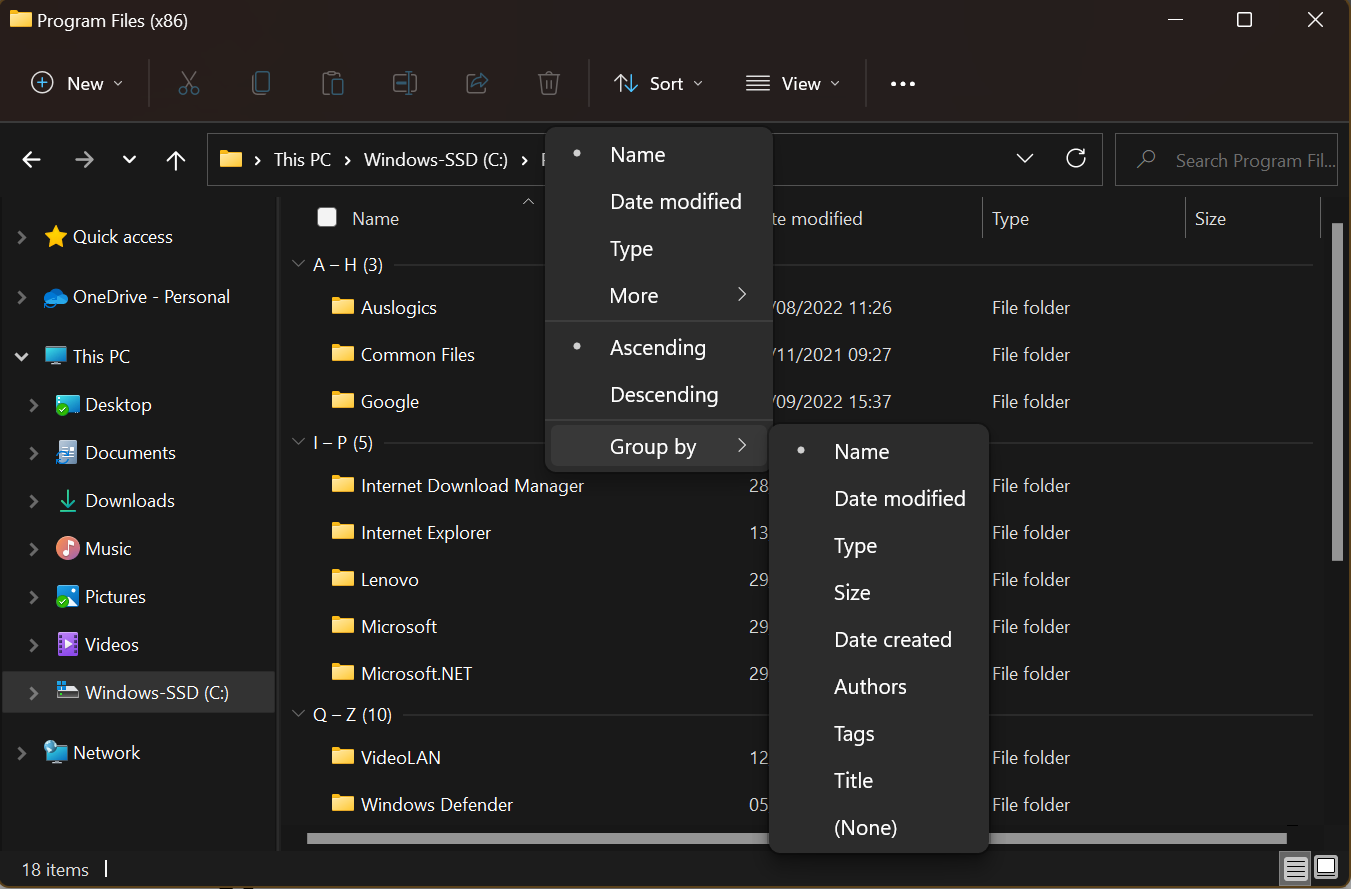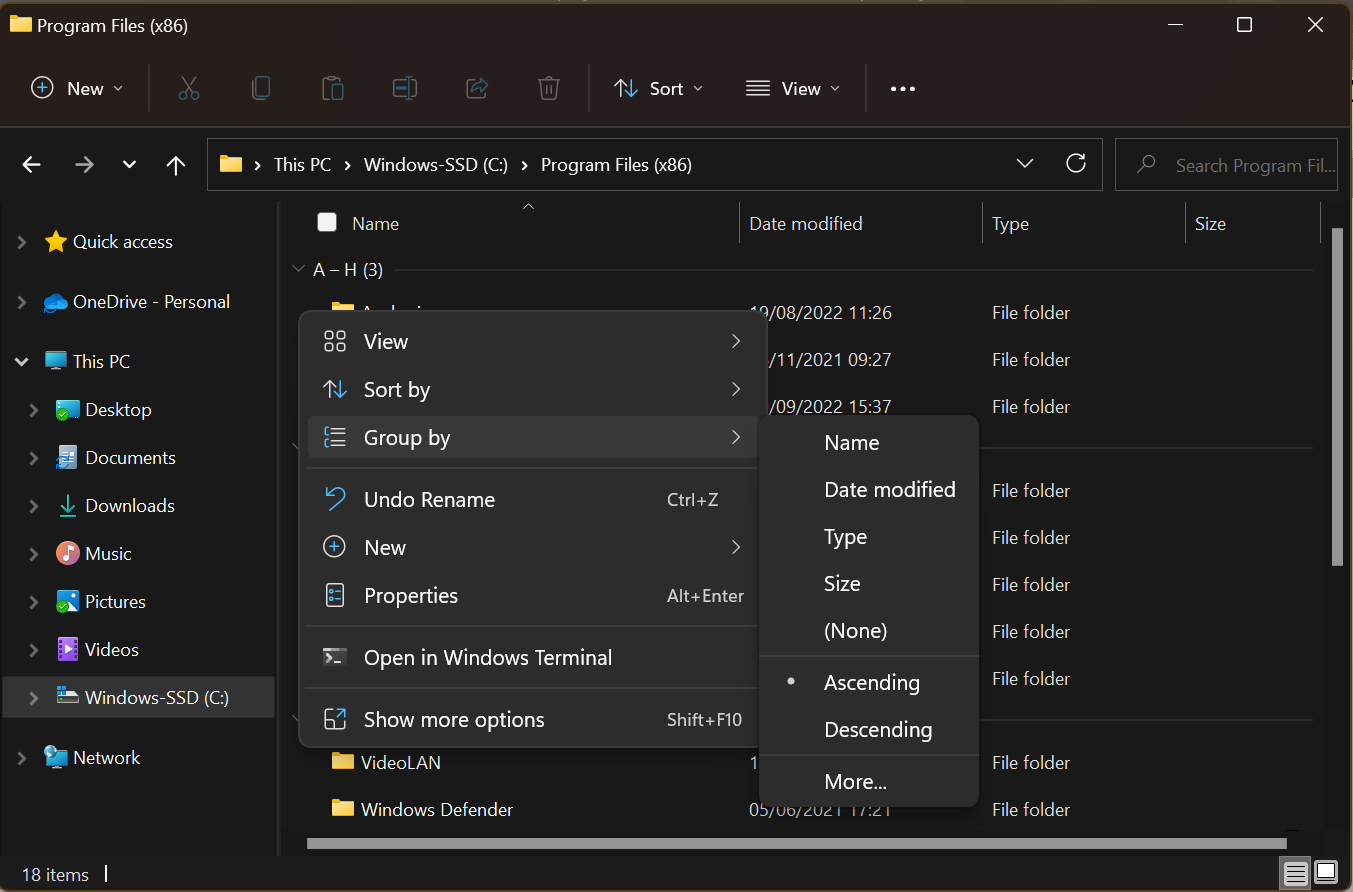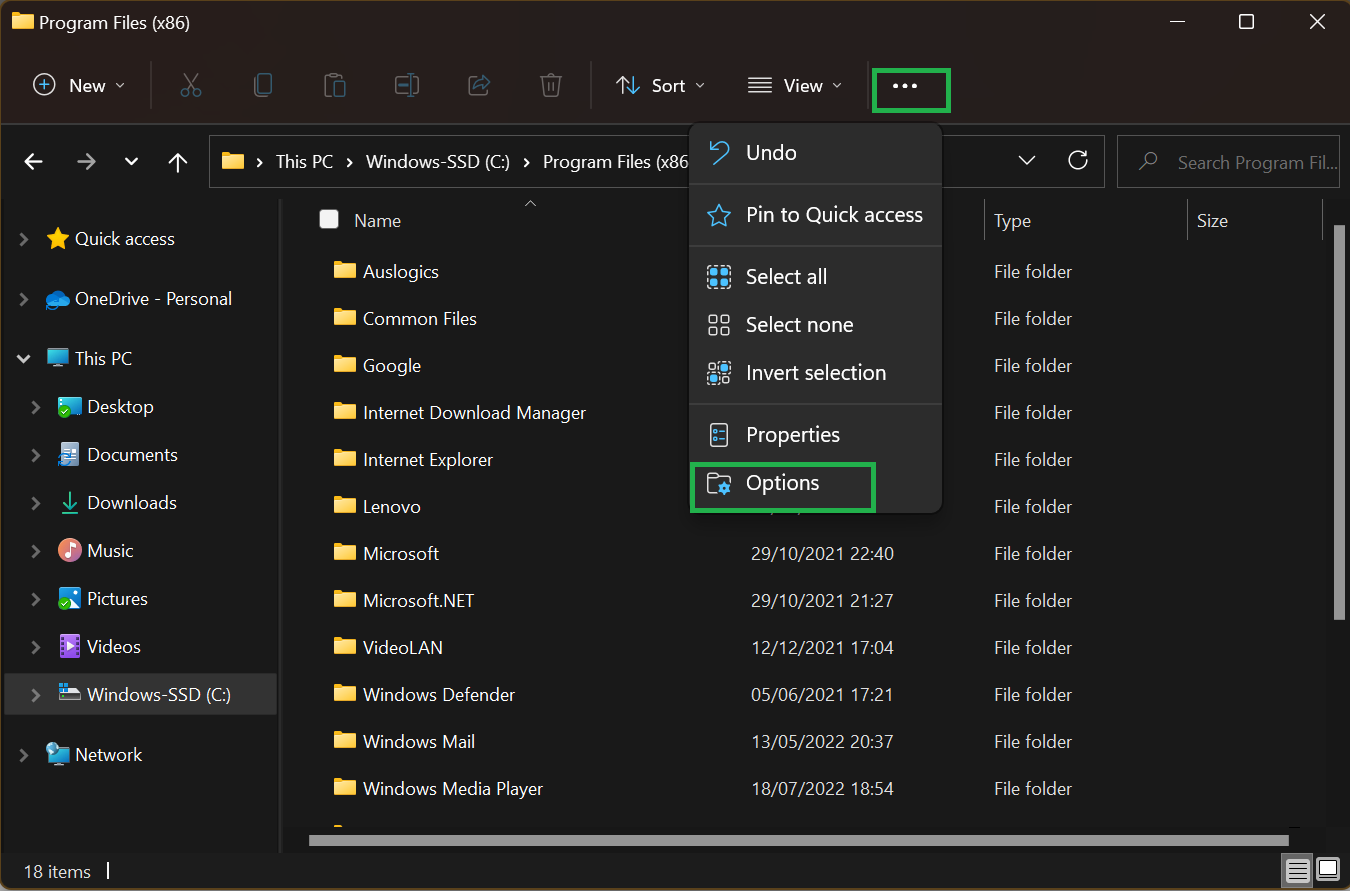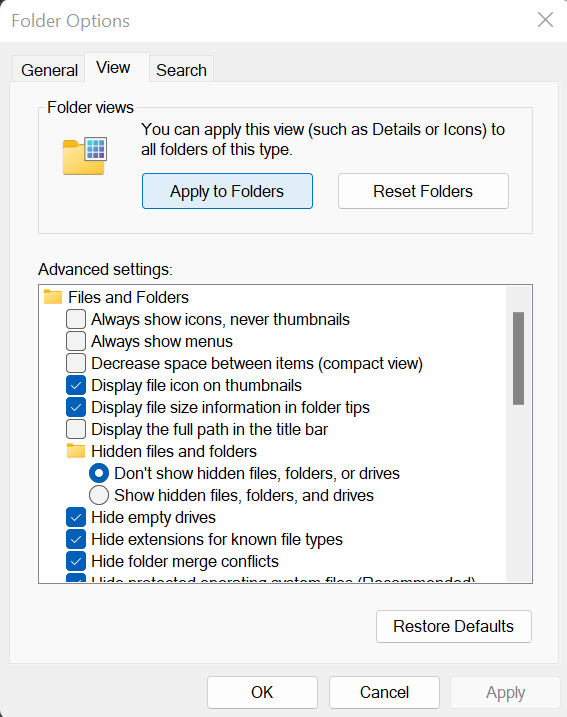
With Windows Explorer on Windows 10/11, arranging your files and folders according to your preferred order is just a few clicks away. The operating system’s native file browser lets you do a lot of cool stuff in addition to the routine copy/paste/move and launch operations.
When viewing a folder full of files or subfolders, you can cycle between multiple icon views (extra large, large, medium, small) or dispense with icons altogether and give prominence to details or file content.
You can decide to sort your files according to one of the default attributes like name, type, size, and date modified or in ascending or descending order. You can also decide that you’d rather group similar items with each set of groupings ordered by name, size, type, etc.
From the foregoing, it is pretty clear that Windows Explorer places a lot of emphasis on the customizability of folder entries, thereby rendering the interface very easy to use and organized according to the tastes of individual users.
The beauty of Explorer is that the sort, view and group options can easily be changed. A user unsatisfied with a certain view mode only needs to click the View option to make another selection.
In the same vein, users who don’t find any use for File Grouping can easily disable it if they wish.
What is the purpose of “Group by” in Windows 11 File Explorer
If you’re using Windows 11, you must have noticed the major improvements in File Explorer. File Explorer now has a new, streamlined context menu, allowing users to get quick access to popular commands.
Likewise, a new update announced in April 2022 has added tabs to File Explorer, a feature that works just like in Microsoft Edge. It lets you open multiple tabs for each section of File Explorer or folder. What’s more, you can create new or close open tabs. Sadly, users will have to wait a little longer for the feature to be rolled out officially.
The “Group by” feature is still available in Windows 11 and is similar to what’s in Windows 10 File Explorer. This feature gives you the ability to organize your files and folders as per your convenience.
However, the grouping feature isn’t always useful, and users might want to disable it. If you’re looking for information on how to turn off “Group by” in File Explorer in Windows 11, keep reading to find out.
Now, just like in Windows 10 File Explorer, your files or folders can be arranged in ascending or descending order. To check this, simply open any folder and click “Sort”. You should see which option is activated.
How to disable file grouping in Windows 10 Explorer?
Turning off file grouping in Windows will undo all grouping arrangements and revert files and folders to their default order. This can be useful in certain situations where linear sorting proves to be a sufficient method of arranging files.
To turn off file grouping in Windows 10:
- On your desktop, click the Windows Explorer icon to launch it or press Windows key + E.
- Navigate to any folder of your choice whose files you want to degroup.
- Click “View” at the top left to access the View tab.
- In the View tab in the Current View group, click the Group By dropdown arrow to reveal a list of selectable attributes.
- Select “None” from the list.
How to disable file grouping in Windows 11 File Explorer?
Here’s how to remove Group view in File Explorer in Windows 11:
- Launch File Explorer using the Win + E keyboard shortcuts or simply click on the File Explorer icon on your taskbar.
- Click the “Sort” option on the new Windows 11 File Explorer command bar.

- Select the “Group by” option and click on “(None)” to ungroup all items in the folder.
Pro tip: If you don’t see the “(None)” option, the folder you’ve opened doesn’t currently have grouped items.
Alternatively:

- Launch File Explorer and open the folder with file grouping enabled.
- Right-click an empty area in the folder and select Group by > (None).
How to disable file grouping for all the folders in Windows 10/11
If you would like to make file grouping universally disabled across your system, you can do that too. Disabling file grouping in all your folders will undo all the “Group by” settings you have applied to any folder anywhere on your computer.
In order to successfully perform a systemwide file grouping disable, at least one folder structure should already be disabled. It then becomes a matter of applying the settings in that file folder across your entire system.
Here is how to disable file grouping for all files and folders in Windows 10:
- On your desktop, click the Windows Explorer icon to launch it or press Windows key + E.
- Navigate to any folder of your choice that already has file grouping disabled.
- Click “View” at the top left to access the View tab.
- In the View tab in the “Show/hide” group, click on the “Options” icon.
- In the Folder Options dialog, click “View” to access the View tab.
- Click the “Apply to Folders” button to make the in-folder setting systemwide.
- Click OK.
How to disable file grouping for all the folders in Windows 11
You can also disable file grouping for all the folders in your Windows 11 machine. The procedure is slightly different from Windows 10 due to the upgrades applied to the new File Explorer.
But don’t worry, it’s quite straightforward:
- Bring up File Explorer by pressing the Win + E keys simultaneously.
- Next, navigate to the folder that already has file grouping disabled.

- Click the three dots at the top right on the new command bar and select “Options”.

- On the Folder Options screen that pops up, click on “Apply to Folders” and select “Yes”.
- Select Apply > OK to effect the changes.
This setting will disable file grouping on all folders in your system.
RECOMMENDED

Resolve PC Issues with Auslogics BoostSpeed
Besides cleaning and optimizing your PC, BoostSpeed protects privacy, diagnoses hardware issues, offers tips for boosting speed and provides 20+ tools to cover most PC maintenance and service needs.
Auslogics BoostSpeed is a product of Auslogics, certified Microsoft® Silver Application Developer
All your files and folders should now be free of any previously selected file groupings. You can also install and run a scan with Auslogics BoostSpeed to get rid of any performance errors that can result from this type of action. It will remove all junk files and useless registry entries and clean up your RAM, ensuring that your Windows 10 PC gives you smooth and snappy results.
How to enable local or universal file grouping
If you wish to enable file grouping again, just follow these steps:
In Windows 10:
- On your desktop, click the Windows Explorer icon to launch it or press Windows key + E.
- Navigate to any folder of your choice whose files you want to group.
- Click “View” at the top left to access the View tab.
- In the View tab in the Current View group, click the Group by dropdown arrow to reveal a list of selectable attributes.
- Select your desired attribute from the list (date, type, size, etc.).
In Windows 11:
- Launch File Explorer using the Win + E shortcut keys.
- Open the folder whose files you want to apply file grouping.
- Click on Sort > Group by, and then select your preferred attribute from the list (name, date modified, size, type, etc.).
Once you’ve decided that you’d make your preferred file grouping attribute applicable across all files and folders, do the following to apply systemwide file grouping according to your preferences:
In Windows 10:
- On your desktop, click the Windows Explorer icon to launch it or press Windows key + E.
- Navigate to any folder of your choice that already has file grouping enabled.
- Click “View” at the top left to access the View tab.
- In the View tab in the “Show/hide” group, click on the “Options” icon.
- In the Folder Options dialog, click “View” to access the View tab.
- Click the “Reset Folders” button to make the in-folder setting systemwide.
- Click OK.
In Windows 11:
- Click on the File Explorer icon on your taskbar, or use the Win + E hotkeys to launch it.
- Select the three dots at the top right and click on “Options”.
- On the “View” tab, click on the “Reset Folders” to apply the setting systemwide.
- Click Apply > OK.
Voila! You’ve got file grouping enabled according to your preferred view type. You can change your preferences at any time whether for individual folders or all of them in a single move.






 Done! Great to see you among our subscribers!
Done! Great to see you among our subscribers!